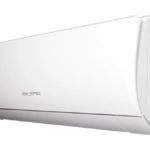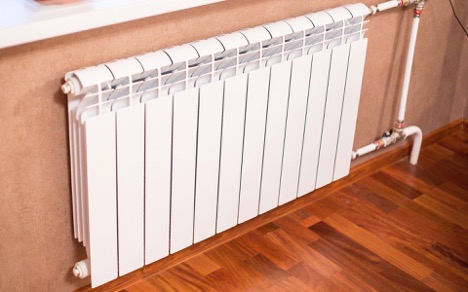Mineral and stone wool for ceiling insulation: how to insulate
Ceiling insulation with mineral wool is carried out inside and outside. Moreover, the sequence of actions is the same - first they lay the waterproofing, then install the sheathing, into which the material itself is laid, after which the vapor barrier comes. The main steps and installation tips are described in this article.
The content of the article
Should I use mineral wool?
Mineral wool for ceiling insulation is one of the best materials, which has several important advantages:
- good thermal insulation;
- resistance to rot and mold;
- environmentally friendly composition;
- does not attract insects and rodents;
- mechanical resistance to constant (static) load;
- long-term operation;
- allows steam to pass through and ensures a normal microclimate in the room.
At the same time, when planning to insulate the ceiling with mineral wool in a private house, you need to take into account certain disadvantages:
- the material is deformed due to high humidity, so a mandatory vapor barrier is required;
- installation is carried out carefully so as not to damage the fibers;
- The cotton wool is quite heavy in weight when compared, for example, with expanded polystyrene, and even more so with polystyrene foam, so you first need to make a strong frame.
In order for laying mineral wool on the ceiling to give the desired effect, it is best to choose insulation in rolls with a foil layer. It is stronger than mats and more economical, since the roll can be easily cut into pieces of the required length.In addition, the foil layer reflects heat inward, providing maximum protection from the cold.
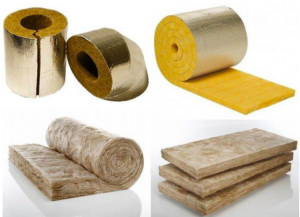
Step-by-step instruction
Before you figure out how to insulate the ceiling in a private house with mineral wool, you need to prepare tools and available materials for the job:
- reinforcing tape;
- nails and hammer;
- set of dowels;
- special plastic fastenings;
- drill;
- special glue;
- knife;
- profile;
- screwdriver with self-tapping screws;
- construction stapler;
- counter rack.
Internal insulation
There are 2 ways to insulate a ceiling with mineral wool - outside and inside. The latter option is more common because internal insulation is more reliable. The main stages are:
- Prepare the surface of the ceiling and attach a thick film to it for waterproofing. It is fixed with a stapler, overlapped and taped with construction tape.

- In order for the ceiling insulation with stone wool to be of high quality, you should make a lathing from wooden beams (square section 50 * 50 mm). Instead, you can use a metal profile. The sheathing is fastened at equal intervals of 60 cm using dowels or self-tapping screws.
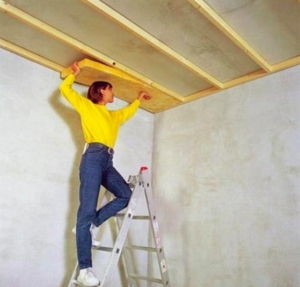
- Builders often wonder what density the insulation should be for the ceiling. In fact, this indicator is standard, but the thickness of the layer matters. It comes in sizes of 5 and 10 cm. As a rule, in regions with harsh winters, 2-4 rolls are laid so that the thickness is 20 cm. The material is fixed with a strong rope, which is laid in a zigzag from rail to rail.
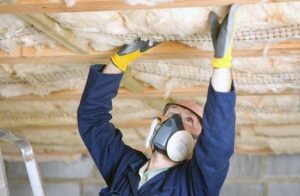
- Now you need to lay the vapor barrier overlapping and secure it with tape and a stapler.
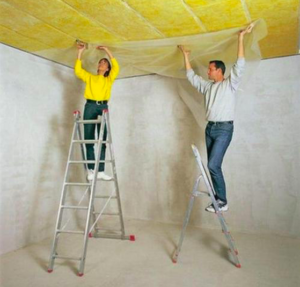
External insulation
From this review it is clear how to properly insulate a ceiling with mineral wool. Moreover, there is a second method - external insulation.It’s easier to do than internally; the main steps are as follows:
- Prepare the roof surface.
- The sheathing is made from a metal profile or wooden beam.
- Lay waterproofing, then insulation.
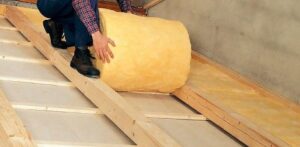
- Lay vapor barrier, then roofing material
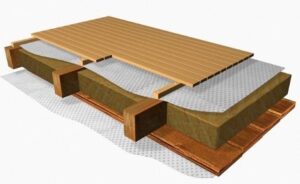
In residential buildings, only internal insulation is almost always done. External work will be needed only if the attic is planned to be turned into a residential or utility room, or attic. Moreover, if the region has very cold winters, it is recommended to implement a combined option, that is, both internal and external insulation.



